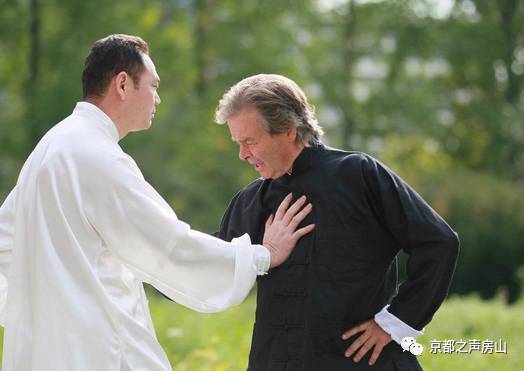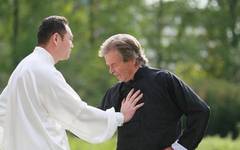Like traditional Chinese medicine (TCM) and acupuncture, Qigong is also an important component of TCM. However, many people who are not specialists in Qigong find it difficult to clearly articulate what Qigong actually is. In reality, the ambiguity surrounding the concept of Qigong is the starting point for pseudo-Qigong and cults like "FLG" to exploit and deceive followers. Therefore, clarifying what Qigong truly is has significant practical implications to prevent people from being misled by quack practitioners and cult leaders like Li Hongzhi.
1. Understanding Qigong from TCM TheoryTCM has a classic authoritative text called the "Huangdi Neijing" (Yellow Emperor's Inner Canon), which was written over two thousand years ago during the Spring and Autumn period. This book discusses Qigong in various chapters as follows:"Suwen: On Ancient True Nature": "Calmness and emptiness, true Qi follows. The spirit guards within, where does illness come from?""Suwen: On Ancient True Nature": "In ancient times, there were true people who lifted heaven and earth, grasped yin and yang, breathed in essence, stood alone guarding the spirit, with muscles like one.""Suwen: On the Transmission of Spirit": "Thus, the sage transmits spirit, follows the weather, and connects with divine clarity.""Suwen: On the Correspondence of Yin and Yang": "Therefore, the sage engages in non-action, enjoys the ability to be calm and empty, and guards against desires to maintain emptiness, thus living endlessly with heaven and earth; this is the sage's way of maintaining the body.""Suwen: On Acupuncture Techniques": "Those with chronic kidney disease can face south at the time of Yin and keep the spirit undisturbed.""Lingshu: On Beginning and End": "Deeply residing in quiet places, occupying the spirit's comings and goings, closing doors and sealing windows, the soul does not scatter, concentrating on one spirit, differentiating essence and Qi, without hearing human voices, to gather essence, must unify the spirit.""Lingshu: On the Storage of Essence": "The will is what governs the spirit, gathers the soul... When the will is harmonious, the spirit is focused, the soul does not scatter, regrets and anger do not arise, and the five organs are not affected by evil.""Lingshu: On the Upper Diaphragm": "Calmness and non-action are necessary to circulate Qi.""Lingshu: On Great Confusion": "Alone in darkness, alone in sight, calming the heart and stabilizing Qi, for a long time without resolution."The above discussions clearly indicate that the "Huangdi Neijing" has already defined the essential characteristics and basic concepts of Qigong. The phrases "Calmness and emptiness, true Qi follows" and "Calmness and non-action are necessary to circulate Qi" fully express the master-servant relationship between the 'spirit' and 'Qi', which is the active self-psychological adjustment influencing physiological functions. This shows that 'adjusting the spirit' is the essential characteristic of Qigong. The numerous specific discussions related to Qigong, such as "the spirit guards within", "standing alone guarding the spirit", "transmitting spirit", "connecting with divine clarity", "engaging in non-action, enjoying calmness", "keeping the spirit undisturbed", "occupying the spirit's comings and goings", "concentrating on one spirit", "must unify the spirit", "governing the spirit, gathering the soul", "spirit focused", "heart harmonious and adjusted", and "calming the heart and stabilizing Qi", clearly prove that 'adjusting the spirit' is an irreplaceable essential characteristic of Qigong. It is evident that Qigong is a discipline guided by and applied in TCM's theories of spirit adjustment and emotional theory. If we were to define Qigong in TCM terms, we could say that Qigong is a method of exercise that promotes the coordination of Qi through spirit adjustment (the so-called calm heart and Qi) to achieve the purpose of disease prevention and treatment. In modern language, Qigong can be summarized as a self-psychological exercise method that promotes physiological functions to become coordinated through self-psychological adjustment, aiming to prevent and treat diseases. Based on the practice methods and mechanisms of Qigong, it can also be defined as: Qigong is a self-psychological exercise method that uses self-suggestion as the core means, allowing consciousness to enter a self-hypnotic (quiet) state, through positive psychological adjustments, leading the physiological functions of various systems in the body towards coordination, and even repairing certain pathological forms, thus achieving the purpose of disease prevention and treatment.2. Understanding Qigong from the Practical Operations of Ancient Practitioners
The famous physician Sun Simiao from the Tang Dynasty specifically described a Qigong practice process in his book "Qianjin Yaofang": "Close your eyes and concentrate, envision the primordial Qi of Taihe in the air, like a purple cloud forming a canopy, with five colors distinct, entering through the hair, gradually entering the crown, like rain after clearing, clouds entering the mountains, penetrating the skin into the flesh, reaching the bones and brain, gradually entering the abdomen, all limbs and organs receiving its nourishment, like water seeping into the ground, if thorough, one will feel sounds in the abdomen, gurgling, concentrating on the thought, without external aid, soon, one will reach the Yongquan point."Those who understand psychology can clearly see from this description that this practice process is essentially a self-psychological adjustment process centered around self-suggestion, focusing on self-imagination, self-attention, and self-perception. The 'primordial Qi of Taihe' and its pathway from head to toe are entirely the result of self-suggestion based on self-imagined content. Through this imagination, one eliminates distractions, forgets troubles, and brings oneself into a state of mind that is refreshing and pleasant, forming a positive emotional state, which is the Qigong quiet state (the so-called "one thought replaces myriad thoughts"), thereby influencing physiological functions towards coordination. This introduction to the practice method irrefutably confirms that the essential characteristic and concept of Qigong is spirit adjustment rather than Qi cultivation.Pseudo-Qigong masters and cult leaders like "FLG" begin by confusing the concept of Qigong. They replace the essential characteristic of Qigong, 'adjusting the spirit', with a mysterious and unfathomable 'Qi' that deviates from the original meaning of TCM, claiming that Qigong is about cultivating Qi, and boasting that they have developed the ability to emit healing and controlling so-called external Qi. They misrepresent the therapeutic effects, which are actually the result of suggestion and hypnosis, as being caused by their high-functioning Qi, thus deceiving uninformed individuals into worshiping them, and even further achieving the goal of complete spiritual control. Therefore, it is crucial to avoid being deceived by cults like "FLG" and to first thoroughly understand what Qigong truly is.

